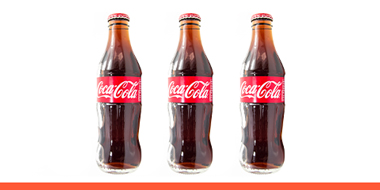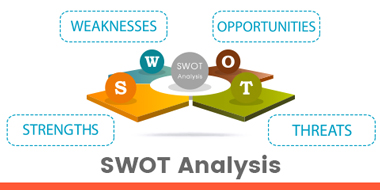Consider all the products you come in contact with in your home on an average day. Food. Footwear. Toiletries. Electronics. Your household items are a mix of daily necessities and personal indulgences. They paint a picture about your personality and values. Chances are, you even buy the same brands over and over again. You trust them to meet your expectations, and you like how they make you feel.
 The connection you feel with a product is powered by branding. A brand is any distinguishing feature of a seller’s products or services, such
The connection you feel with a product is powered by branding. A brand is any distinguishing feature of a seller’s products or services, such
as logos, names, fonts, and taglines, according to the American Marketing Association. Branding tells you why one product is different from another.
Recognizable, strong branding is essential for any business owner. It helps you build customer loyalty and have longevity in the marketplace. Yet it’s not enough to simply come up with a logo and a name. Customers have to care about your brand and believe in the message behind your products.
All your favorite products have brand identities that speak to your lifestyle. You can create the same experience with your small business brand by making it relatable to your target customers.
What is brand identity?
Brand identity is the collection of traits that define your business’s mission and values. Your company logos, product designs, and business ethics are all part of your brand.
The goal is to use all these physical and visual elements to make a positive impression on customers. Brand identity also:
- Gives your products a sense of uniqueness
- Shows customers who you are and how you solve problems
- Conveys how you want customers to feel when using your product
For example, what words, visual elements, or emotions come to mind when you think of Coca-Cola? Its iconic red logo? Classic hourglass bottle? Refreshing taste? A sense of heritage and cultural significance?
Every time you use a product, you form your own perception about its brand. When customer perceptions closely align with a brand’s identity, the business is doing a good job of appealing to its customer base.
Benefits of a unique brand identity
It may seem harmless to have a business without a distinct brand identity. After all, you can still find clients by promoting the benefits of your product. However, customers don’t only judge products by price and quality. Some purchasing decisions are made based on status or lifestyle preferences.
For a competitive advantage, consider these reasons to take control of your branding.
1. Customer loyalty: Many customers choose Apple products because they’re modern, innovative, and user-friendly. Others prefer Samsung products because they’re well-priced, customizable and widely compatible. Creating a brand identity is like starting a friendship. It tells customers you understand who they are and have something in common with them.
2. Market segmentation: A brand can convey many characteristics. Luxury. Discount value. Leisure. Prestige. Having an identity narrows your market and appeals to customers who are willing to pay your prices. Setting prices too low makes it difficult to cover business costs and turn a profit. So, it isn’t worthwhile pursuing customers who will never value your product.
3. Brand consistency: A well-crafted brand acts as a guideline for business goals and decisions. When you and your customers are happy with your transactions, you get better at providing good service. You start focusing everything you do on satisfying your audience. Product development, promotions, customer service, and social media marketing all become more efficient.
4. Brand value: A trusted brand identity becomes a valuable asset and self-marketing tool for a business. Companies can’t control every second of a customer’s product experience. They rely on branding to have an ongoing conversation with customers. Over time, customers who feel connected to your brand become ambassadors in your community. They influence others to try your products.
How to build a successful small business brand identity
A brand identity requires major evaluation because every element and marketing method has to reinforce the core principles and goals of your business. Involve your existing customers and employees in this process, as they can accurately tell you where your brand identity and services succeed or fall short.

You can begin with a SWOT (Strengths, Weaknesses, Opportunities, Threats) analysis to pinpoint your business niche.
Strengths: Think about what you do better than your competitors. What advantage does this offer your business?
Weaknesses: Think about weaknesses that make your business less appealing than the competition. (Ex. price, location, product variety)
Opportunities: Think about emerging industry trends or customer needs. Are there opportunities to seize new markets?
Threats: Assess obstacles that hinder business performance. What factors threaten your ability to meet customer demands in the future?
Once you know your niche, start developing the elements of your brand identity. Think about the type of customers you want to reach and the impression you want to make on them.
Do you want customers who care most about status? Price? Craftsmanship? Heritage? Trendiness? Answering these questions will help you choose the right language, tone, and selling points to capture your audience.
Choose visual imagery that strengthens your identity
 Technology brands often choose sleek, simple logos that represent modernity and convenience. Fun, family-oriented brands frequently use bright colors and distinct fonts.
Technology brands often choose sleek, simple logos that represent modernity and convenience. Fun, family-oriented brands frequently use bright colors and distinct fonts.
Keep in mind, many memorable brands stand out because they introduced an interesting product design or packaging. Crocs and Pringles were common products with a visual twist.
In today’s connected society, customers have substantial power to make or break a business. As a result, a brand identity can become negative if the business doesn’t live up to its promises. The same goes for branding that’s too vague, confusing, or inconsistent. Ask your customers for feedback about your brand to make sure their perceptions match yours.
Stay true to your brand identity
A successful brand identity isn’t easy to create. But it can improve sales, ease product rollouts, and simplify your long-term business growth. Think about it. If brand identity didn’t matter, you would feel comfortable buying any product that satisfies your basic need.
Instead, you repeatedly choose products from companies with reputations you trust. Refine your brand identity now. In the long run, you’ll gain loyal customers who are happy to make ongoing investments in your products and service.


